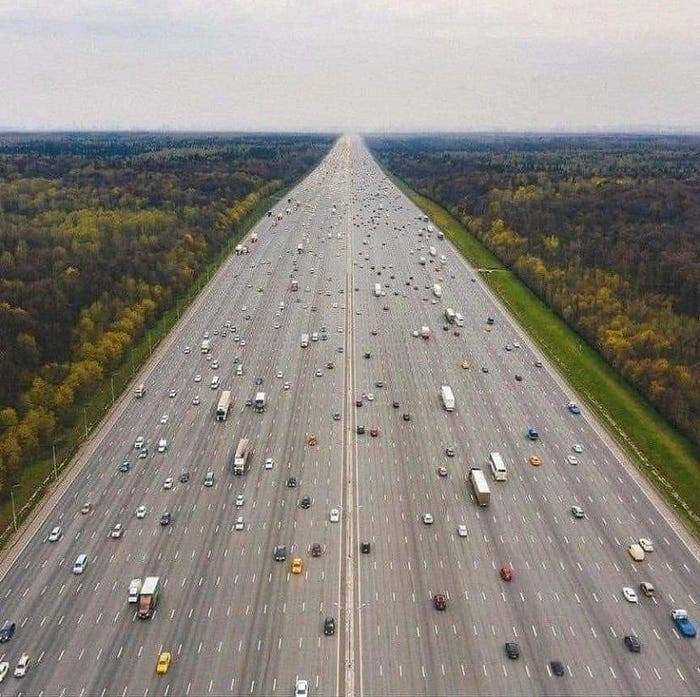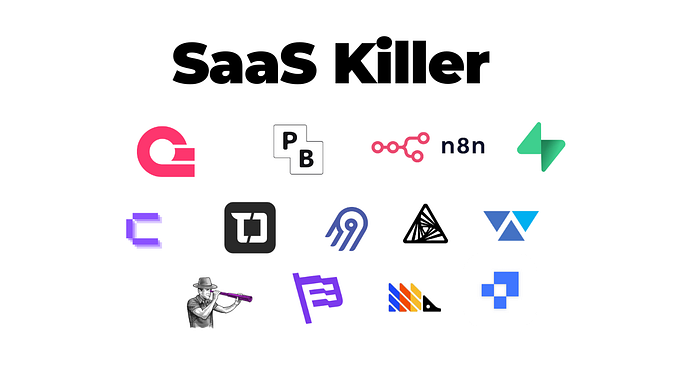
The Katy Freeway in Texas connects Houston’s western suburbs with the city’s downtown. At its widest point, it spans 26 lanes including parallel roads, before it intersects with another freeway, creating this massive web of pavement. The Katy Freeway is among the widest in the world. But it didn’t start out this big. The freeway was initially built in the 1960s with 6 lanes in most places. But as the suburbs and office space around Houston started growing in the 1980s and 90s and more people began using the freeway, it became a traffic nightmare. By 2004, it was ranked the second worst bottleneck in the country.
The Root Cause
To accommodate the growing commuter class, the city began a nearly billion-dollar expansion project to add additional lanes. The solution seems natural — more lanes equals less congestion. But traffic didn’t get any better. In fact, it got worse, in both the morning and afternoon commutes.
The reason why hinges on a simple economic theory. One that is often overlooked, because actually reducing traffic is far from simple. Highway expansion has gone hand in hand with the suburbanization of American cities like Houston. It becomes a self-fulfilling recipe for urban sprawl: a highway gets built to connect suburbs to a city center, which encourages more development along it, which necessitates even more highways when those get congested — and on and on and on. The instinct to widen highways to relieve traffic makes sense — but there’s a reason it doesn’t work: due to a concept called “induced demand”.
let us imagine that there are three pipes “which demonstrate the highways”. And a group of balls are the commuters that drive on them. These particular commuters will sit in traffic no matter how bad it gets because they have to. Driving to work on the highway is their only option. Let’s say this is what congestion looks like during peak rush hours. Once a certain number of cars get on the highway, traffic slows to a crawl. Now let’s add a new lane. These drivers now have more room to spread out — which should make traffic flow better. That might happen at first, but it doesn’t stay that way. That’s because there’s another set of people who will take the highway under the right conditions — even though they have other commuting options.
Policy Implications and Solutions
When a highway is congested, they might take local roads instead. Or be able to drive during off-peak hours. They might use other modes of transportation, like public transit or biking. Or maybe they can work from home that day and skip the commute altogether. In a few years, these people will start taking the highway, enticed by less congestion. This is induced demand at play: the more supply there is, the more demand will follow, to exhaustion. And in this case, the supply is highway lanes. And sometimes, like on the Katy Freeway, congestion gets even worse after a highway expansion, until some of those people with more options go back to their old ways.
But in the end, you’re still left with more drivers and congestion that’s at least as bad as it was before. When our transportation system is so reliant on highways and private automobiles, there’s almost no way around it because that’s the system that we’ve created. This is Kyle Shelton, an urbanist based in Houston. The endless reduction of congestion… should that be… the driving, honestly the driving policy question for a lot of our transportation funding? Big expensive highway infrastructure projects are still the prevailing band-aid to congestion in the US.
Alternative Solutions and Perspectives
The transit advocacy group Transportation for America found that between 1993 and 2017, the US added over 30,000 miles of new freeway lanes in 100 metro areas. Building more highways may provide some short-term relief. And it’s easier than most infrastructure projects to get federal funding to do a highway expansion. But if we want less traffic and fewer drivers, giving flexible commuters better choices is a good place to start likely by improving public transit by adding more and better bus routes or trains. That alone might not be a silver bullet for congestion relief for the same reason that adding another lane isn’t: new drivers will take the place of transit commuters on the highway.
And for many people living off highways in sprawling US cities, public transit may never be an adequate solution. ’Cause it’s not just about the infrastructure. It’s also about individual behaviors. It’s about where job opportunities are located. And most of our cities have now been constructed in this way where the car is the prime mode. Another option is to enact policies that actively disincentivize people from using the highway.
Like congestion pricing, which charges people who drive on highways during rush hours. Or remote work programs that deter people from traveling during the highest traffic times — or make it so they don’t have to commute at all. And in the long-term, better land-use policies can help as well, like building communities that put people closer to where they need to go. And if building more highways results in more drivers and congestion, then removing them could have the opposite effect. For example, the city of Boston removed a freeway in its city center in the 1990s and replaced it with a boulevard with biking and bus lanes and more space to walk. It reduced congestion by 62%. And now the Democratically controlled Senate is considering nearly $1 billion in funding for similar highway-removal projects in other cities.
Conclusion and Insights
What we build and invest in in the world of transportation truly changes our behavior. Suppose building more roads makes us drive on them more. Then giving people better choices by investing in the right things, will make us drive less. Because, if we build it, they will come.








